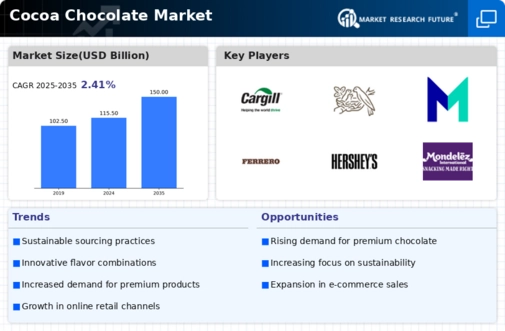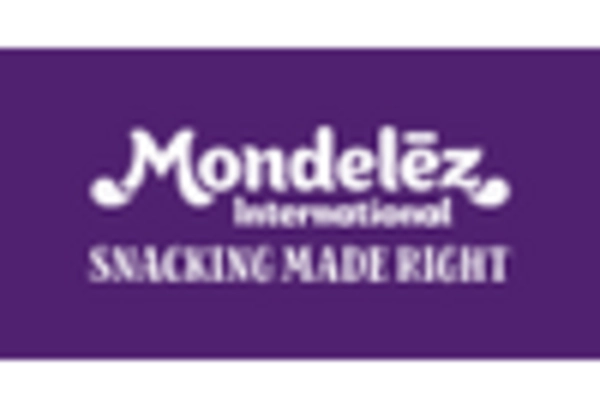Market Analysis
In-depth Analysis of Cocoa Chocolate Market Industry Landscape
The cocoa chocolate market exhibits dynamic characteristics shaped by a blend of consumer preferences, global supply chain intricacies, sustainability concerns, and changing tastes in the confectionery industry. Central to the market dynamics is the enduring love for chocolate among consumers worldwide. Chocolate, derived from cocoa beans, remains a beloved indulgence, and its market dynamics are intricately linked to the demand for diverse chocolate products.
Consumer preferences and evolving tastes play a pivotal role in shaping the cocoa chocolate market. As consumers seek unique and premium chocolate experiences, there's a growing demand for high-quality cocoa and chocolate products. Artisanal and craft chocolates, often made with single-origin cocoa beans, have gained popularity, reflecting a shift toward a more discerning and sophisticated consumer base. This preference for quality and uniqueness has led to a diversification of products, with dark chocolate, organic chocolate, and ethically sourced chocolates gaining traction in the market.
Global supply chain dynamics heavily influence the cocoa chocolate market. The majority of the world's cocoa is sourced from West Africa, and any disruptions in the cocoa-producing regions can impact the supply and pricing of cocoa beans. Issues such as environmental challenges, labor practices, and fluctuations in weather conditions contribute to the volatility of the cocoa supply chain. Market players must navigate these complexities to ensure a stable supply of cocoa for chocolate production.
Sustainability concerns have become integral to the cocoa chocolate market dynamics. There is a growing awareness of ethical sourcing practices, fair trade, and environmental sustainability in cocoa production. Consumers are increasingly mindful of the social and environmental impact of their chocolate choices, leading to a rise in demand for chocolate products with certifications such as Rainforest Alliance and Fair Trade. This shift has prompted many chocolate manufacturers to adopt sustainable sourcing practices, addressing concerns related to deforestation, child labor, and fair wages for cocoa farmers.
Innovations in chocolate formulations and product diversification contribute to the market dynamics of cocoa chocolate. Manufacturers are constantly exploring new flavor profiles, textures, and ingredients to captivate consumers' taste buds. Sugar-free, vegan, and functional chocolates with added ingredients like nuts, fruits, or superfoods are gaining popularity, reflecting the industry's adaptability to changing dietary preferences and health-conscious consumer trends.
Market dynamics are also influenced by the rise of premiumization in the cocoa chocolate sector. Premium and luxury chocolate brands are experiencing increased demand as consumers are willing to pay a premium for unique and high-quality chocolate experiences. Packaging, branding, and storytelling are becoming crucial aspects of the marketing strategy for premium chocolate, adding a layer of sophistication and exclusivity to the overall consumer experience.
Economic factors and global trade policies impact the cocoa chocolate market as well. Currency fluctuations, import/export regulations, and tariffs can affect the cost structure and pricing of cocoa and chocolate products. Economic downturns may influence consumer spending habits, leading to potential shifts in demand for different chocolate segments.

















Leave a Comment